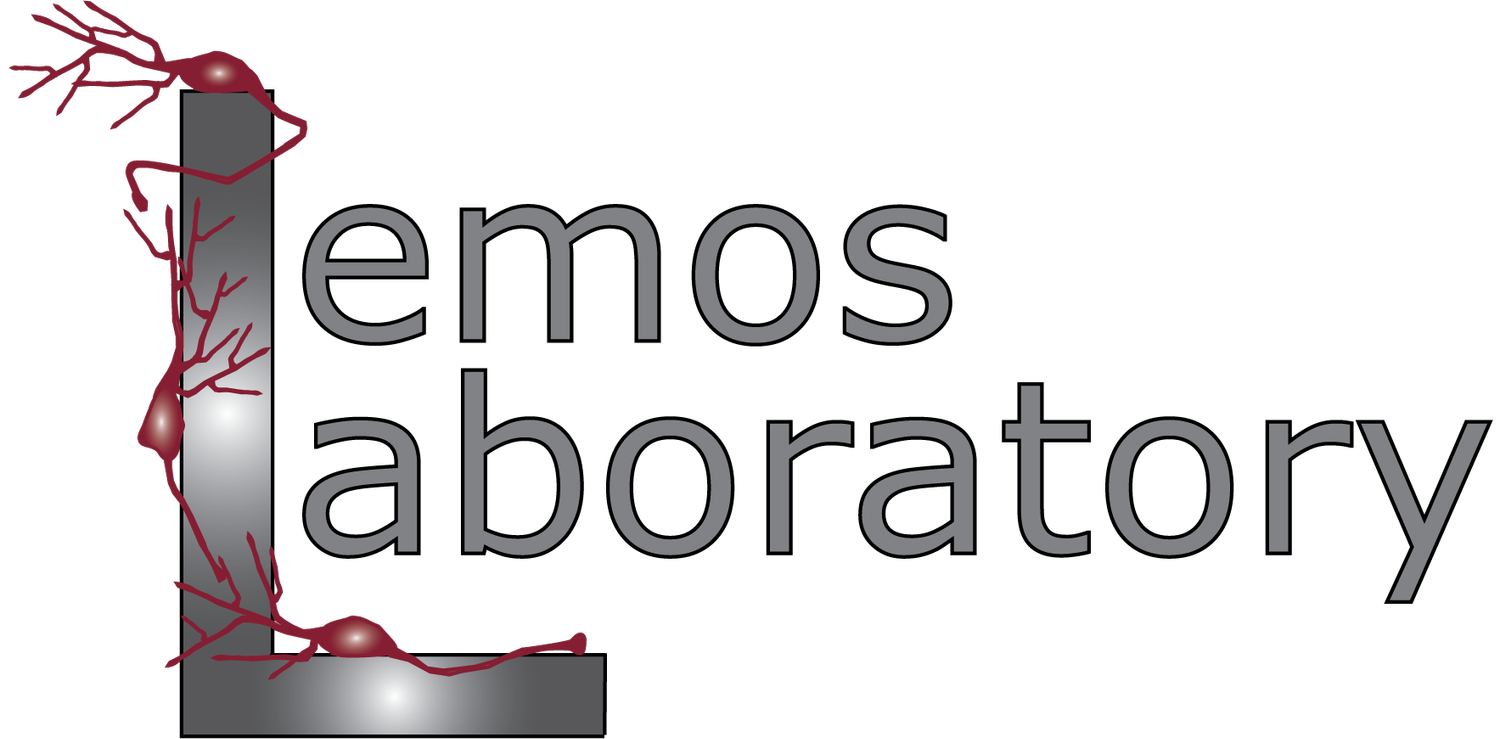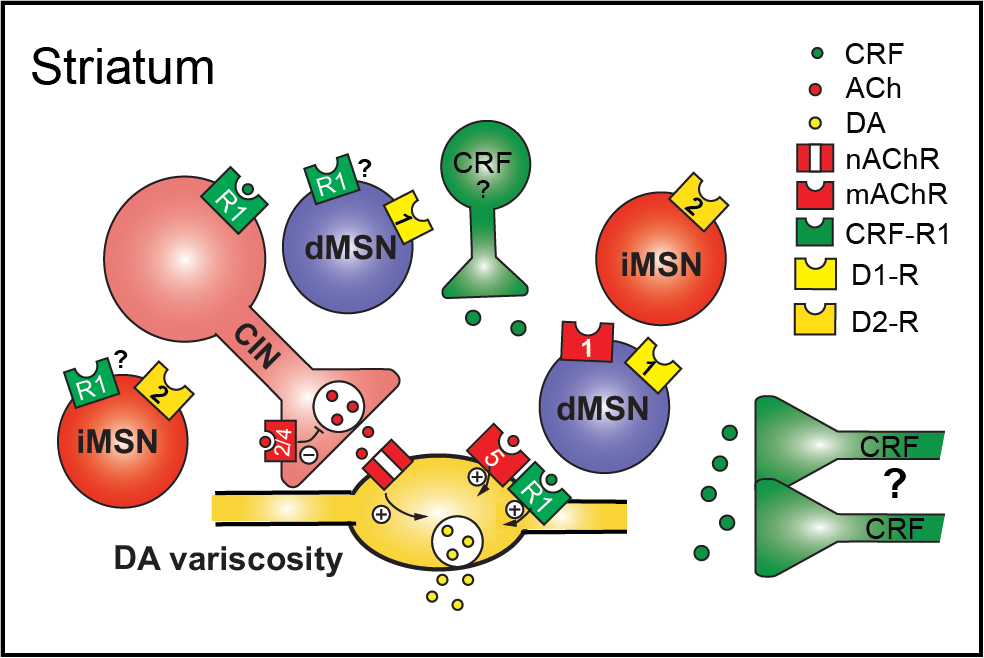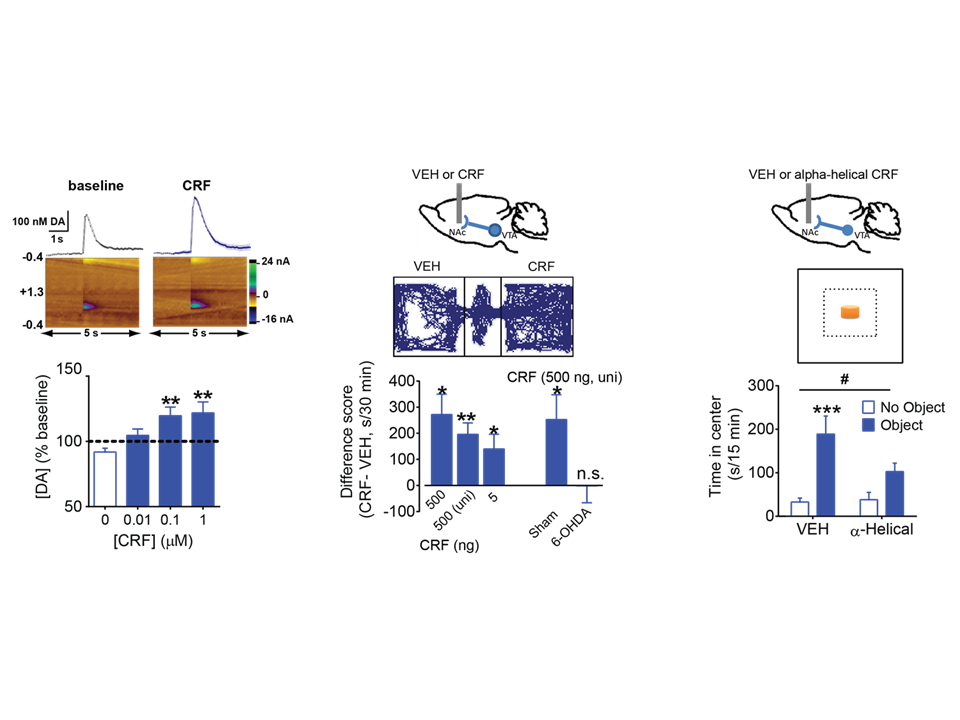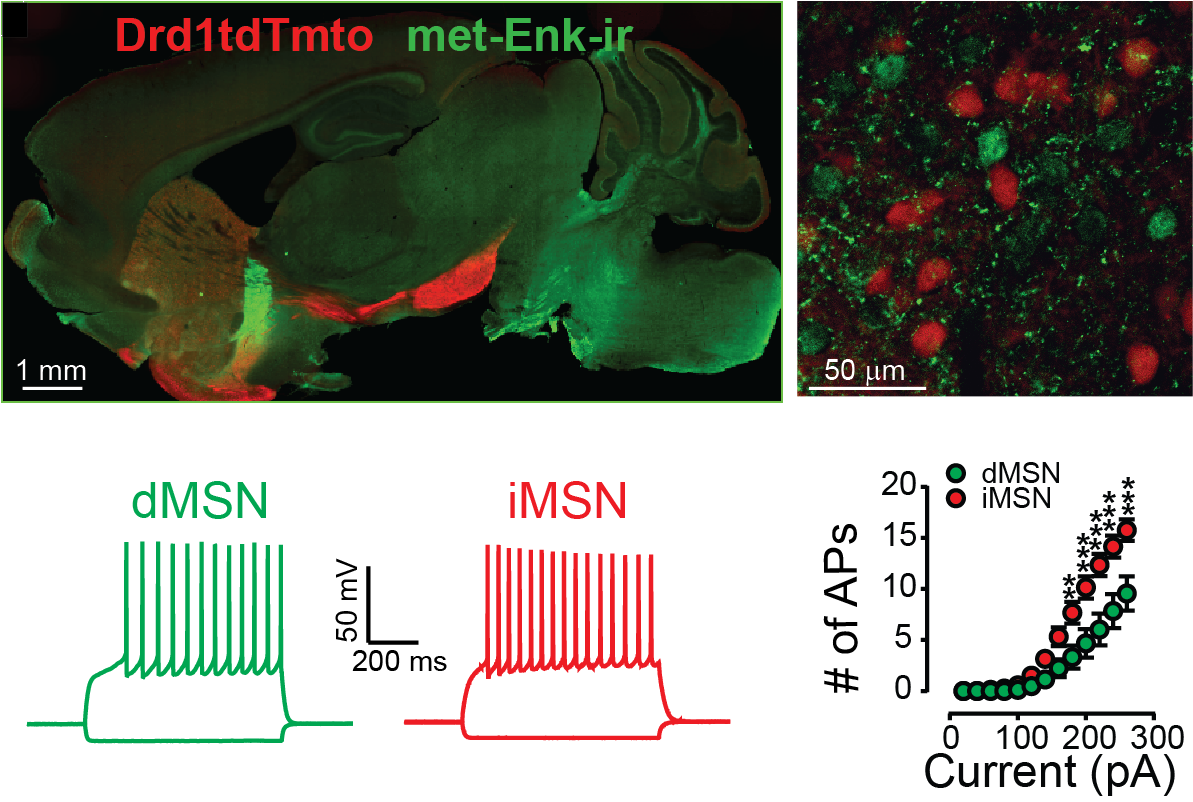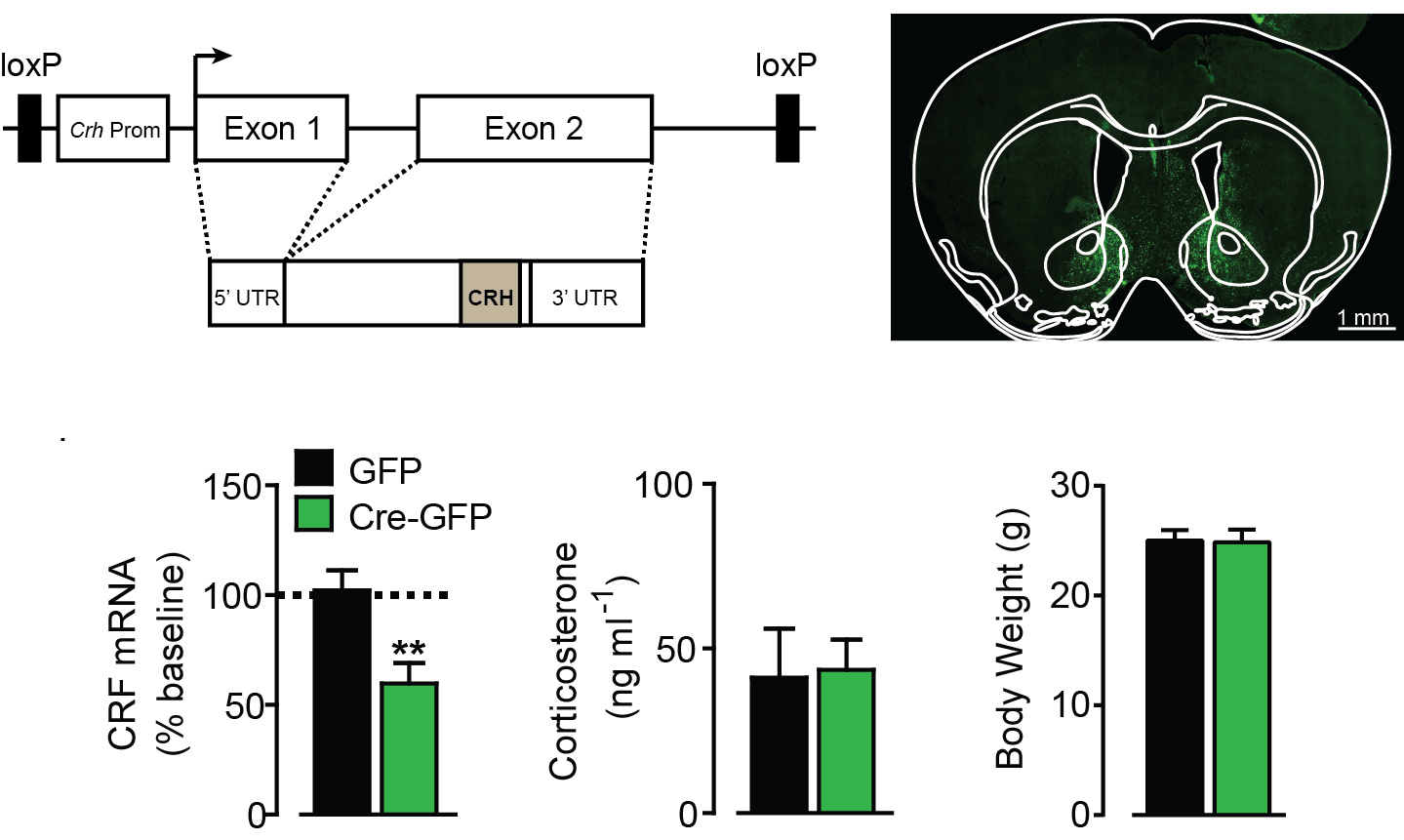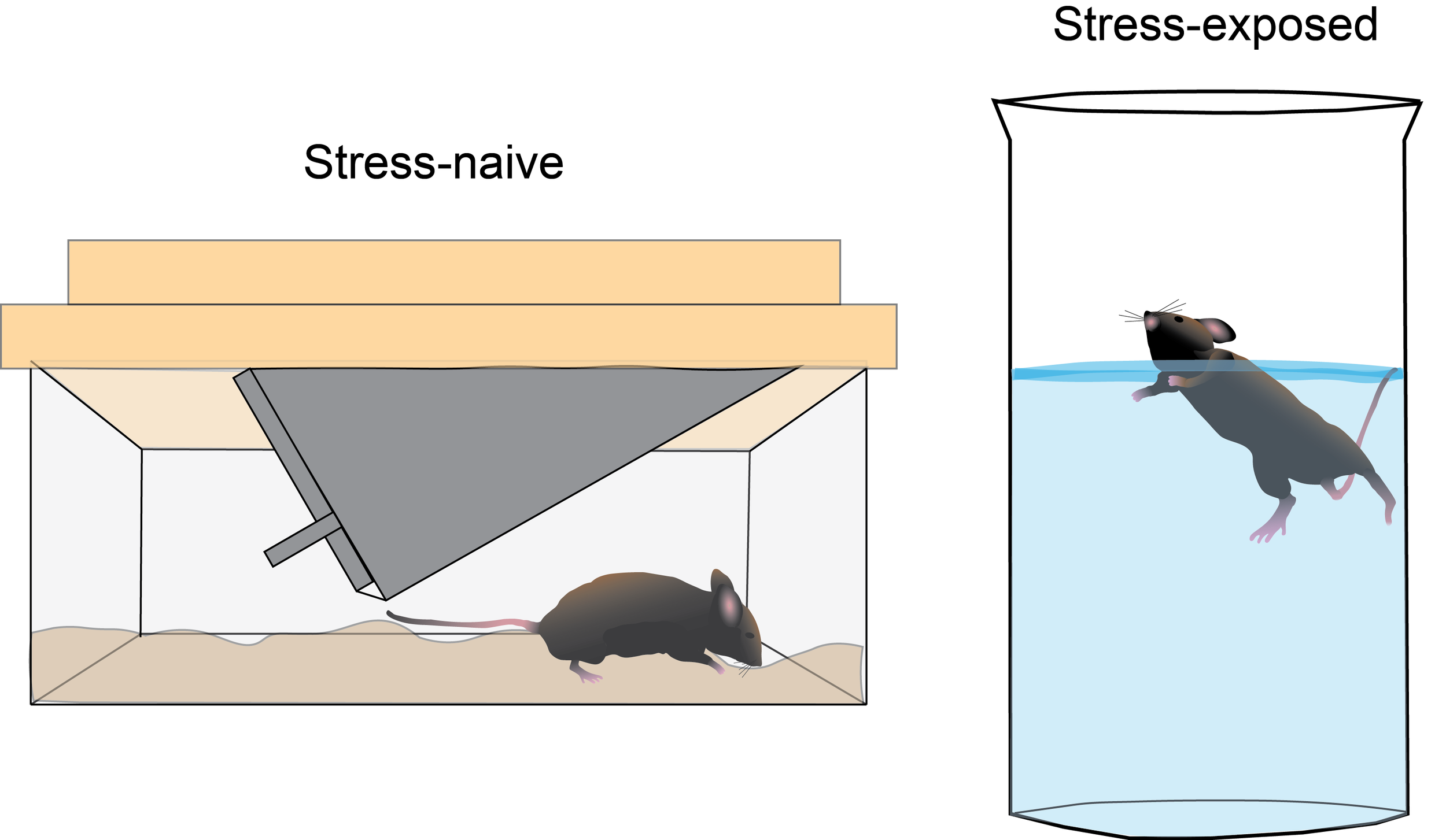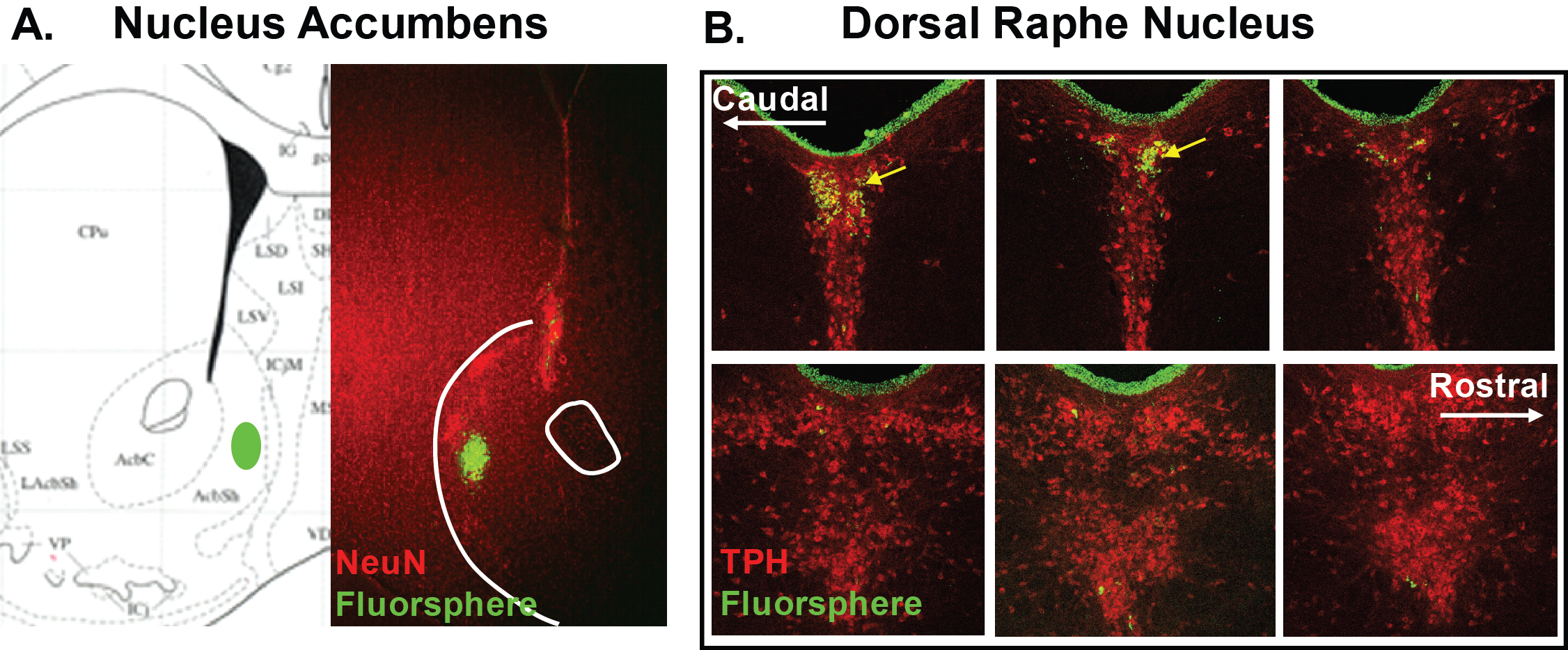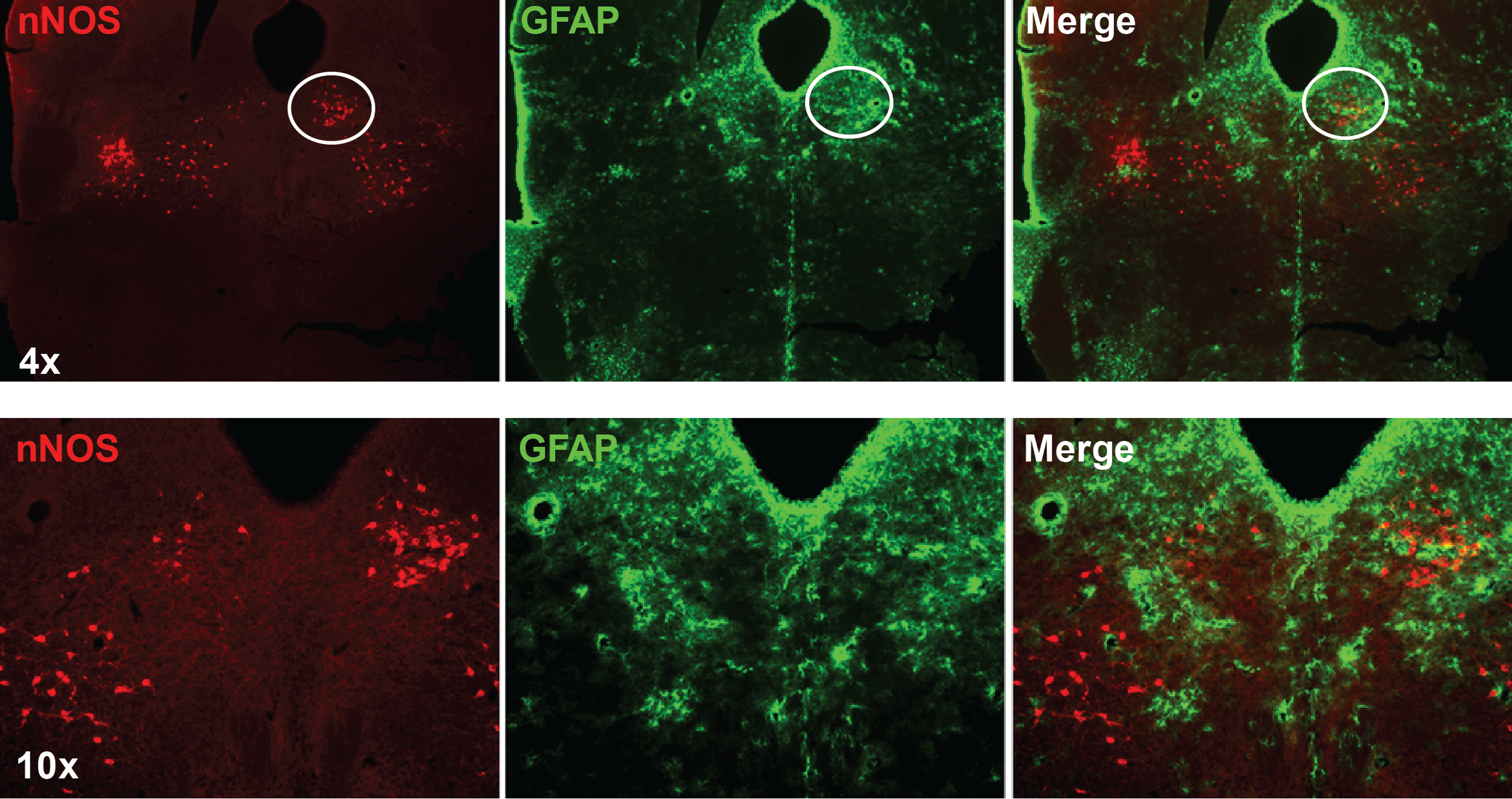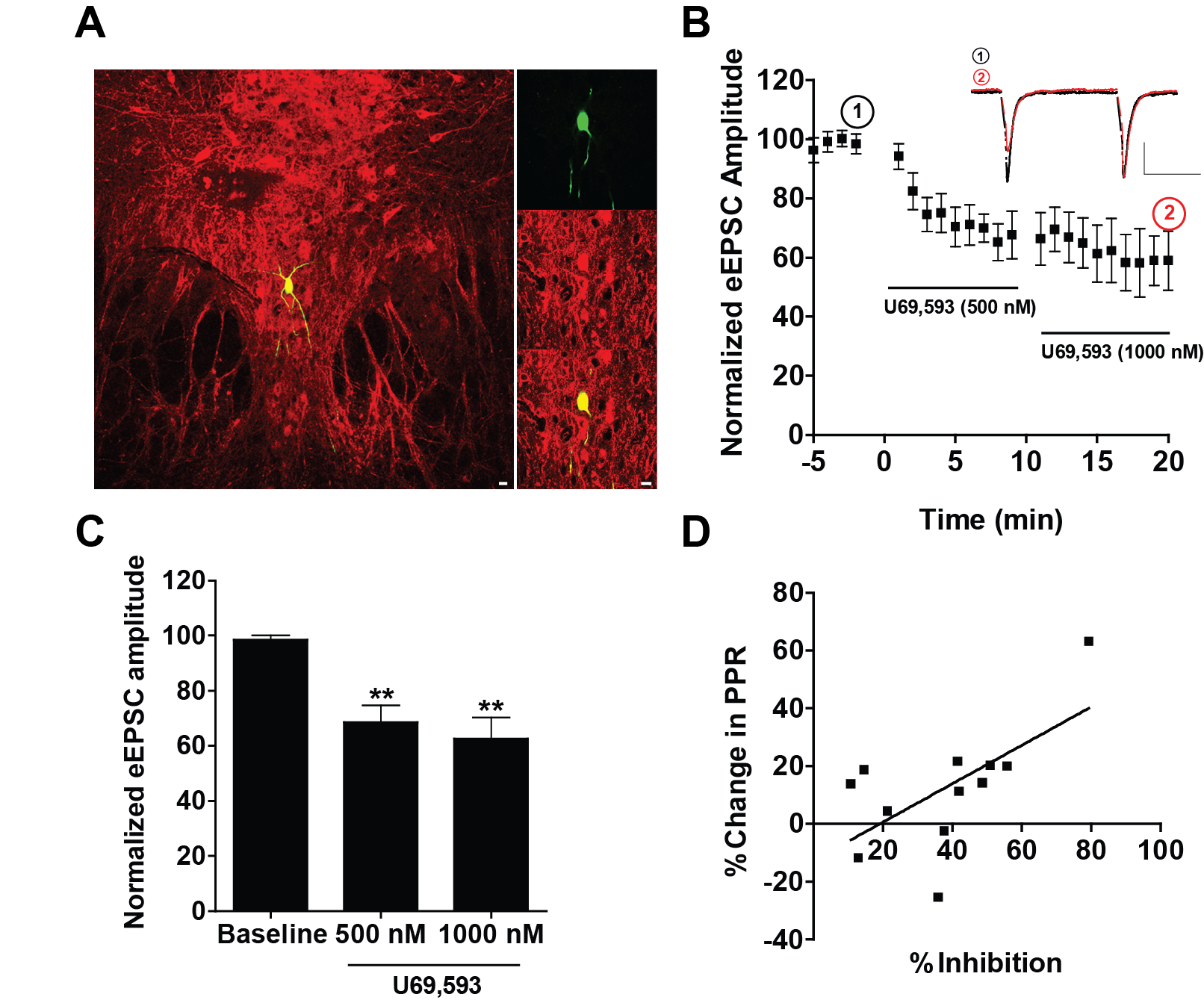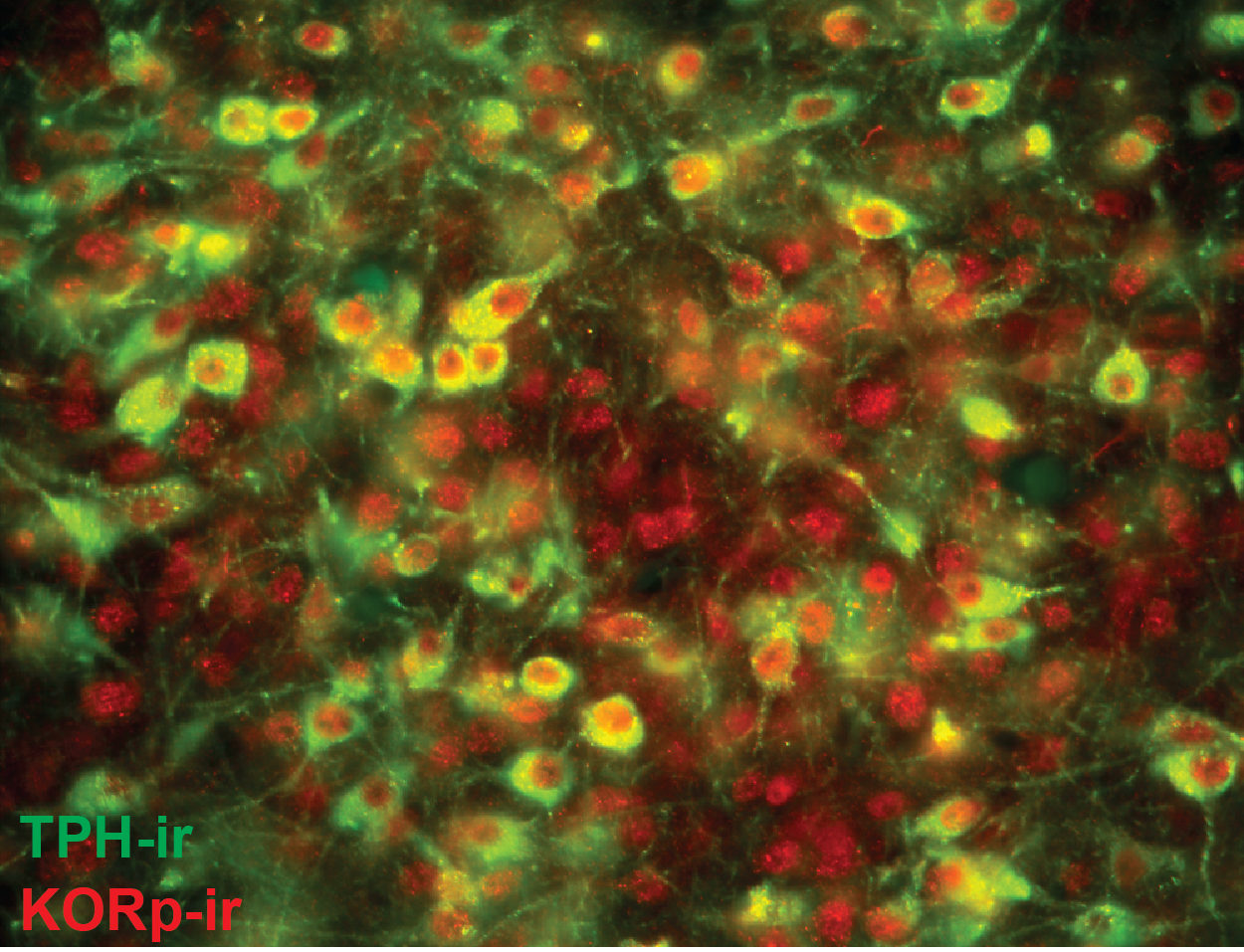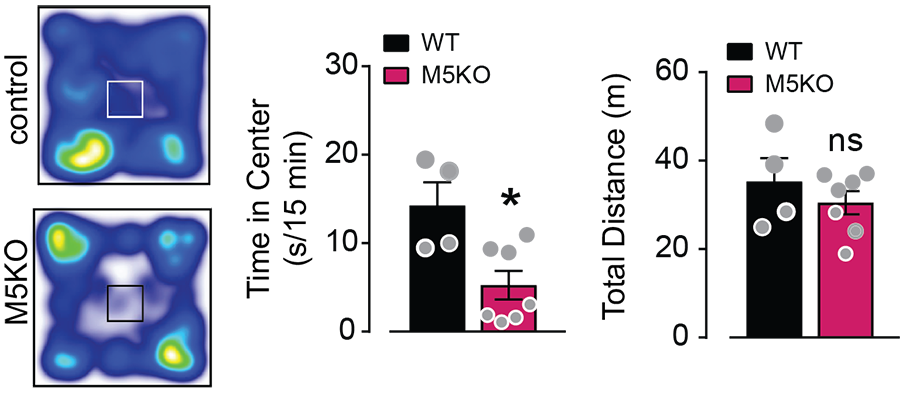Current Projects in the Lab
Project 1: How do neuropeptides modulate basal ganglia function?
(Funded by MH109627, 2016-2021, K99/R00: CRF actions in the nucleus accumbens in mice with different life histories.
2018-12-128,Whitehall Foundation, 2018-2023: Stress-induced modulation of striosome microcircuit in decision making)
Our laboratory is specifically interested in how the two stress-associated neuropeptides corticotropin releasing factor (CRF) and dynorphin modulate striatal circuitry to modulate motivated behavior. We are interested in examining this in male and female mice that have been relatively unperturbed compared to those that have been repeatedly stressed.
project 2: Dorsal Raphe nucleus microcircuit function
(Project is funded by Start-up funds from University of Minnesota Department of Neuroscience and the Medical Discovery Team on Addiction)
The dorsal raphe nucleus (DRN) is one of the major sources of serotonin in the brain and sends projections throughout the forebrain. While approximately 70% of the cells in DRN are serotonergic, there are also cholinergic, dopaminergic, glutamatergic, GABAergic and nitergic cells within and projecting from the DRN. All these cells contribute to an interesting microcircuit dynamic that is engaged and at times altered in response to stressor exposure. The Lemos laboratory is interested in understanding DRN cell type diversity and microcircuit function. Moreover, we are curious how the dynamics of this microcircuit change in response to different environmental conditions.
project 3: Muscarinic Acetylcholine Type-5 receptor (m5) as a therapeutic target for stress-induced psychiatric disorders.
(Project is funded by Start-up funds from University of Minnesota Department of Neuroscience and the Medical Discovery Team on Addiction)
The M5 receptor is a metabotropic acetylcholine receptor that has emerged as a viable therapeutic target for the treatment of neuropsychiatric disorders. Unlike other muscarinic receptors, M5 has a relatively limited expression pattern. In addition, it is the only muscarinic receptor localized to dopamine neurons. We are interested in understanding potential alterations in the expression or function of M5 receptors in response to stress. We are also interested in examining the role of M5 disruption in anxiety and depression-associated phenotypes.
